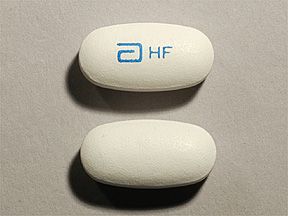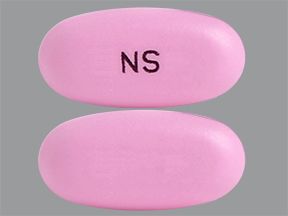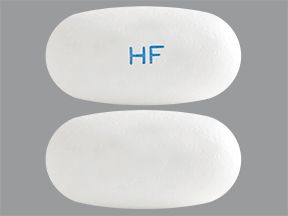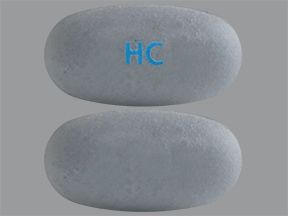Depakote and Depakote ER (divalproex sodium) are brand-name prescription drugs used to treat manic episodes and certain seizures and to help prevent migraine. It comes as oral tablets and oral capsules. It’s typically taken once or twice per day.
Depakote and Depakote ER (divalproex sodium) are prescribed to:
- treat manic episodes linked to bipolar disorder in adults
- treat certain types of seizures in adults and certain children
- help prevent migraine headaches in adults
The active ingredient in Depakote and Depakote ER is divalproex sodium. Depakote and Depakote ER belong to a class of drugs called antiepileptics.
Depakote comes as delayed-release (DR) tablets* and sprinkle capsules.† Depakote extended-release‡ (ER) comes as tablets.
This article describes the dosages of Depakote and Depakote ER, as well as their strengths and how they’re taken. For a comprehensive look at Depakote and Depakote ER, see this article.
* DR tablets have a special coating that stops the tablet from dissolving too soon while passing through the stomach.
† DR sprinkle capsules can be swallowed whole or opened and sprinkled onto food.
‡ ER tablets release the drug slowly over 24 hours.
This table gives a summary of the forms, strengths, and typical starting dosages of Depakote and Depakote ER. Be sure to keep reading for more details.
| Depakote forms | Strengths | Typical starting dosages |
| delayed-release (DR) tablet | • 125 milligrams (mg) • 250 mg • 500 mg | • Manic episodes linked to bipolar disorder: 750 mg per day (mg/day) • Seizures: 10 mg to 15 mg per kilogram* of body weight per day (mg/kg/day) • Prevention of migraine headaches: 250 mg twice per day |
| DR sprinkle capsule | 125 mg | Seizures: 10 mg/kg/day to 15 mg/kg/day |
| extended-release (ER) tablet | • 250 mg • 500 mg | • Manic episodes linked to bipolar disorder: 25 mg/kg/day • Seizures: 10 mg/kg/day to 15 mg/kg/day • Prevention of migraine headaches: 500 mg once per day |
* 1 kg is about 2.2 pounds.
Depakote and Depakote ER forms
Depakote comes in three different forms:
- delayed-release (DR) tablets
- DR sprinkle capsules
- extended-release (ER) tablets
DR tablets have a special coating that stops the tablet from dissolving too soon while in the stomach. ER tablets release the drug slowly over 24 hours. With sprinkle capsules, you can swallow the capsules whole or open the capsules and sprinkle the medication onto food.
Depakote and Depakote ER strengths
The three forms of Depakote come in different strengths:
- Depakote delayed-release (DR) tablets:
- 125 mg
- 250 mg
- 500 mg
- Depakote DR sprinkle capsules: 125 mg
- Depakote ER tablets:
- 250 mg
- 500 mg
Typical dosages
Below are the typical dosages of Depakote and Depakote ER for each of the conditions they’re taken to treat.
Typically, your doctor will start you with a low dosage called a starting dose. A starting dose is different than a loading dose. A loading dose is higher than your typical daily dose. It’s given at the beginning of treatment to produce a quick response in the body.
Lower starting doses of Depakote and Depakote ER are given to reduce side effects. (For more information about side effects, see this article.) Your doctor will adjust your dose over time to reach the amount that’s right for you. They’ll ultimately prescribe the smallest dosage that provides the desired effect.
The Depakote ER maximum dose is the same as the maximum dose for the Depakote delayed-release (DR) forms. However, if your doctor prescribes Depakote ER, you’ll take your dose once per day. You’ll take Depakote DR forms more than once per day.
There isn’t a single standard dosage or specific dosage range of Depakote or Depakote ER. The dosage your doctor prescribes will depend on several factors. (To learn more, see the “Factors that can affect your dosage” section below.)
The following information describes dosages that are commonly taken or recommended. However, be sure to take the dosage your doctor prescribes for you. Your doctor will determine the best dosage to fit your needs.
Dosage for bipolar disorder
Depakote and Depakote ER tablets are approved to treat manic episodes linked to bipolar disorder. (Depakote sprinkle capsules are not approved for this use.)
The starting dosage of Depakote tablets is 750 mg/day.
The starting dosage of Depakote ER tablets is 25 mg per kilogram* of body weight per day (25 mg/kg/day). For example, if you weigh 60 kg (about 132 pounds [lb]), your typical starting dosage would be 1,500 mg/kg/day.
The maximum dosage of Depakote and Depakote ER tablets for bipolar disorder is 60 mg/kg/day.
* 1 kg is about 2.2 lb.
Dosage for seizures
All forms of Depakote are approved to treat focal onset impaired awareness seizures (previously known as complex partial seizures). They’re also approved to treat absence seizures.
The starting dosage of Depakote for both types of seizures is 10 mg/kg/day to 15 mg/kg/day. This is the same for all three forms of Depakote.
For example, if you weigh 60 kg (about 132 lb), your typical starting dosage would be between 600 mg/kg/day and 900 mg/kg/day.
Your doctor may increase your dose each week by 5 mg/kg/day to 10 mg/kg/day until your seizures are managed. The maximum dosage of Depakote for seizures is 60 mg/kg/day.
Dosage for migraine headaches
Depakote and Depakote ER tablets are approved to help prevent migraine headaches. (Depakote sprinkle capsules are not approved for this use.)
The starting dosage of Depakote tablets is 250 mg twice per day. Your doctor may increase your dose up to a maximum dose of 1,000 mg/day, as needed.
The starting dosage of Depakote ER tablets is 500 mg, taken once per day for 1 week. After this, your doctor may increase your dose up to a maximum of 1,000 mg/day, as needed.
Children’s dosage
The Food and Drug Administration (FDA) has approved Depakote and Depakote ER for use in children ages 10 years and older with certain types of seizures. The recommended dosages for children are the same as the dosages for adults. For more information, refer to the dosages described above.
Long-term treatment
Depakote and Depakote ER are meant to be taken as long-term treatments for certain types of seizures or to prevent migraine headaches. If you and your doctor determine that Depakote or Depakote ER is safe and effective for you, you’ll likely take it long term. If you’re taking Depakote or Depakote ER for bipolar disorder, your doctor will advise whether you’ll take the drug long term.
To learn more about how long you’ll take Depakote or Depakote ER, talk with your doctor.
Below are answers to some frequently asked questions about Depakote, Depakote ER, and Depakote sprinkle capsules.
Are Depakote or Depakote ER taken for anxiety or depression? If so, what are the drugs’ dosages?
The Food and Drug Administration (FDA) hasn’t approved the use of Depakote or Depakote ER for anxiety or depression. However, doctors may prescribe these drugs off-label for these conditions. Off-label use is prescribing a medication for a different purpose than what it’s approved for by the FDA.
Depakote and Depakote ER are only approved to treat manic episodes of bipolar disorder and certain types of seizures. They are also approved to help prevent migraine headaches. (For more details about the drugs’ uses, see this article.)
If your doctor recommends Depakote or Depakote ER to treat anxiety or depression, they’ll prescribe the best dosage for you. To learn more, talk with your doctor.
Are Depakote or Depakote ER prescribed in a dose of 1,500 milligrams (mg)?
Yes, your doctor can prescribe Depakote ER in a dose of 1,500 mg. However, keep in mind that your dose of Depakote or Depakote ER will depend on certain factors, such as your body weight.
For example, the starting dose of Depakote ER for manic episodes of bipolar disorder is 25 mg per kilogram* of body weight (mg/kg). A person who weighs 60 kg (about 132 pounds [lb]) would have a starting dose of 1,500 mg of Depakote ER.
Similarly, Depakote doses are adjusted after taking the starting dose. Your daily dose may be 1,500 mg depending on your weight, response to the drug, or other factors.
If you have questions about your dosage, talk with your doctor. For more information, see the “Depakote and Depakote ER dosage” section above or the “Factors that can affect your dosage” section below.
* 1 kg is about 2.2 pounds.
Can Depakote or Depakote ER be taken for agitation or dementia? If so, what are the dosages for these uses?
The Food and Drug Administration (FDA) has not approved Depakote or Depakote ER to treat agitation (feeling irritable or restless) or dementia. However, the drugs may be prescribed off-label to treat these conditions. Being prescribed a medication for a different purpose than what the FDA approved it for is called off-label use.
Depakote and Depakote ER are only approved to treat manic episodes of bipolar disorder and certain types of seizures. It’s also approved to help prevent migraine headaches. (For more details about the drugs’ uses, see this article.)
If your doctor recommends Depakote or Depakote ER to treat agitation or dementia, they’ll prescribe the best dosage for you. For more information, talk with your doctor.
Are Depakote or Depakote ER available as a liquid? Can either drug be given by IV?
No, Depakote and Depakote ER aren’t given by IV injection. They don’t come in liquid form. The drugs come as tablets or sprinkle capsules.
For more information, see “Depakote and Depakote ER forms” in the “Depakote and Depakote ER dosage” section above.
If you miss a dose of Depakote or Depakote ER, take it as soon as you remember. However, if it’s almost time for your next dose, skip the dose you missed. And take your next dose at its usual time. Do not take more than one dose at a time to make up for a missed dose.
To help make sure you don’t miss a dose, try using a medication reminder. This can include setting an alarm or using a timer. You could also download a reminder app on your phone.
The Depakote or Depakote ER dosage your doctor prescribes will depend on several factors. These include:
- the type and severity of the condition you’re taking Depakote or Depakote ER to treat
- which form of the drug you take
- your age
- your weight
- other medical conditions you have
Dosage adjustments
Your doctor might adjust your starting dose if you are ages 65 years or older or taking certain other medications.
Depakote and Depakote ER are taken orally. They come as tablets or sprinkle capsules that you’ll swallow whole. With Depakote sprinkle capsules, you can also open the capsule and sprinkle the medication on soft food. This is an option for people who have trouble swallowing tablets or capsules.
Depakote comes as delayed-release tablets (DR) or DR sprinkle capsules. In these forms, you’ll take Depakote more than once per day. Depakote ER comes as extended-release tablets that you’ll take once per day.
You can take all forms of the drug with or without food. However, do not chew, break, or crush the tablets or sprinkle capsules.
If you take more Depakote or Depakote ER than your doctor prescribes, you may develop serious side effects.
It’s important that you do not take more of this medication than your doctor advises.
Symptoms of an overdose
Overdose symptoms of Depakote and Depakote ER can include:
- somnolence (extreme sleepiness)
- heart block (slow and irregular heartbeats)
- coma
- hypernatremia (high sodium level in the blood)
If you take more than the recommended amount of Depakote or Depakote ER
Call your doctor right away if you believe you’ve taken too much Depakote or Depakote ER. Another option is to call America’s Poison Centers at 800-222-1222 or use its online tool. If you have severe symptoms, immediately call 911 or your local emergency number, or go to the nearest emergency room.
The dosages in this article are typical dosages provided by the drug manufacturer. If your doctor recommends Depakote or Depakote ER, they will prescribe the dosage that’s right for you. Always follow the dosage that your doctor prescribes for you.
As with any drug, never change your dosage of Depakote or Depakote ER without your doctor’s recommendation. If you have questions about the dosage that’s right for you, talk with your doctor.
Besides learning about dosage, you may want other information about Depakote and Depakote ER. These additional articles might be helpful:
- More about Depakote and Depakote ER. For information about other aspects of these drugs, refer to this article.
- Learn about side effects. To learn more about side effects of Depakote and Depakote ER, see this article. You can also refer to the prescribing information for Depakote, Depakote ER, and Depakote sprinkle capsules.
- Details about your condition. For details about the conditions the drugs are taken to treat, the following may be helpful:
- our headache and migraine hub and these related articles
- our epilepsy and seizures hub and these related articles
- this list of bipolar disorder articles
Disclaimer: Medical News Today has made every effort to make certain that all information is factually correct, comprehensive, and up to date. However, this article should not be used as a substitute for the knowledge and expertise of a licensed healthcare professional. You should always consult your doctor or another healthcare professional before taking any medication. The drug information contained herein is subject to change and is not intended to cover all possible uses, directions, precautions, warnings, drug interactions, allergic reactions, or adverse effects. The absence of warnings or other information for a given drug does not indicate that the drug or drug combination is safe, effective, or appropriate for all patients or all specific uses.




